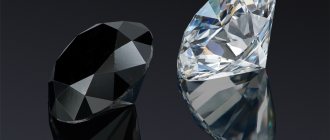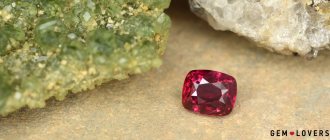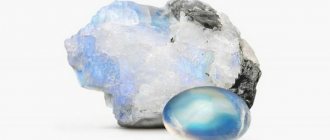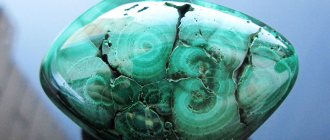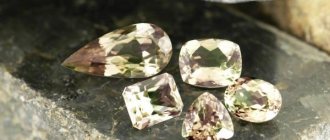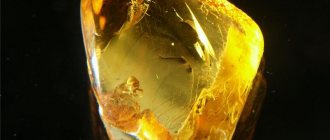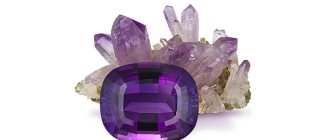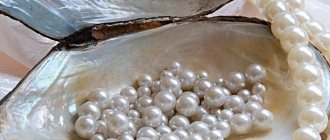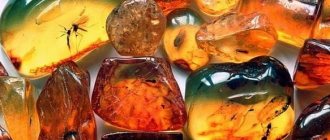How to distinguish stone from glass? This is a fairly frequently asked question. Information about the authenticity of stones is quite sought after. In order not to acquire counterfeit jewelry, you need to be aware of the intricacies of this matter. The main attribute of real jewelry in all countries is a certificate. In the sphere of production and sale of precious stones they are more important than in any other industry. In this case, this document is proof of the quality of the stone. Diamonds are a profitable investment for investors because their price is always high and has a constant tendency to increase, despite the unstable economic situation.
Certified diamonds are a more expensive piece of jewelry. It is the presence of a certificate that makes a stone more expensive, sometimes even three times, in comparison with a non-certified stone. At this time, there is a situation that large banks are starting to operate with jewelry as collateral capital, which is gaining great popularity. In this area, there is the following black spot - assessing the quality of stones at customs. It is very rare to find experienced specialists at the border, so illegal transportation of jewelry and counterfeits is a very common occurrence.
In some stores, fraud was observed: they wanted to sell plastic as expensive aventurine, and instead of corals they tried to slip an ordinary shell. Some stores even put diamonds with a non-existent name on display under the guise of a precious stone. In most cases, in the jewelry industry, business is built on trust: stores trust suppliers, and buyers do not doubt the seller, and some of them quite often turn out to be scammers. And as a result, it is possible that a deceived buyer walks around with a fake for a long time, being sure that it is a real jewel.
Naive buyers are fooled by low prices for gold or silver items with precious inserts, and as a result, scammers get rich from such gullibility. And after some time, deceived buyers discover that instead of rare amber they purchased an ordinary trinket, and instead of diamonds, cheap glass
History of the oldest fraud
Since ancient times, there have been situations of fraud when imitations or simple glass were sold as jewelry. One of the Roman writers, Pliny the Elder, argued that the most profitable business is counterfeiting jewelry. Since then, the activity of counterfeiting jewelry has begun to gain momentum. At that time, in the East, a method was invented to make ordinary sapphires noble. This procedure consisted of the following steps: ordinary gray stones were taken and heat treated. The result was more or less beautiful blue stones, which were sold for a higher price. Today, this procedure has become more functional. Cheap stones are imitated like jewelry by not only firing, but also irradiation, coating the surface and eliminating small cracks. Already at the beginning of the twentieth century, synthetic jewelry began to be produced on an industrial scale. They replace natural expensive treasures. Counterfeits are identical to the real stone in terms of physical characteristics and appearance, but in most cases have a lower price. If we compare real and synthetic rubies based on pricing, we see the following situation. A naturally grown ruby, free of blemishes and defects, beautiful in color and weighing about five carats, will cost approximately thousands of US dollars per carat, while a synthetic one with the same characteristics can be purchased for just a few dollars. Today, all the most common types of stones are produced on a huge scale. If in early times only colored stones were counterfeited, today fraud with diamonds is not uncommon. It is very easy to replace rhinestones with fake diamonds, which can have any color, even colorless, like diamonds.
Maintainability
As already mentioned, natural stone is not easy to process. Any manipulations with it must be carried out in a special wet workshop. If a stone window sill bursts or chips, it will have to be completely dismantled and taken to production. By the way, it is not a fact that any damage can be repaired. An acrylic countertop can be repaired and restored on site. Scratches are eliminated by resurfacing; chips, burns and cracks are eliminated by installing patches and subsequent sanding. Yes, natural stone is harder and scratches less, but if it cannot be repaired, if something happens...
One of the signs of synthetic stone is its neat appearance.
In the world of fakes, there are various types of imitation for real stones. For example, a stone such as turquoise is most often sold on the jewelry market in pressed form. It is made by sintering natural fine crumbs. Under natural conditions, real jewelry grows in the form of ordinary threads, and if you manage to find large thread sizes, they will cost a lot of money. If someone decides to buy jewelry with a turquoise element, then it is recommended to pay vigilance to the color of the precious rarity and its structure. Turquoise with pronounced inclusions of various minerals and those that have uneven coloring are more valued. Buyers should be suspicious of the absolute purity and uniform color of turquoise, since in nature such a phenomenon is quite rare or even impossible.
A wide range of applications of artificial decorative stone should be outlined:
- External ground coverings and decorative elements (paving stones, sidewalk tiles, figured tiles or concrete parquet, terrace boards; curbs, steps for stairs).
- Various façade elements (window sills and gutters, small stones and large panels for decorating various areas).
- Fencing (fences and small hedges).
- Elements of landscape design (flower beds, flowerpots, beds, plant tubs and much more).
- All kinds of interior decoration of premises.
Tags that carry false information
Price criterion is one of the most important when identifying jewelry. But even experienced jewelers make mistakes in this matter, not to mention those people who decide to purchase jewelry for the first time in their lives. It is also not correct to assume that the sellers are to blame, since when receiving the goods, they evaluate the goods superficially and read the information on the tags. For example, a situation happened in one of the jewelry stores when a new batch of jewelry was brought to them. These were silver jewelry with blue stones inserted. People who accepted the goods, after examining the appearance of the stone, found it difficult to determine its name. The tag said it was a sapphire. But in fact it turned out to be ordinary glass of high quality processing. Some unscrupulous sellers indicate “virgin sapphire” on the tag, instead of “synthetic sapphire”. The abbreviation "grown" implies grown. From the side of the law, everything is fair and there is nothing to pester; an inexperienced buyer in this matter may not pay attention to this or may not know and will be deceived. The International Confederation of Homology has fixed the main possible names and abbreviations. But since these standards are advisory in nature, in some countries they do not listen to them and write false information on labels.
Ease of transportation, weight
Natural stone is much heavier than acrylic. If only because to make the same tabletop, a solid slab of stone is used, and an acrylic tabletop is made from a 12-mm sheet with an MDF backing, which significantly reduces the weight of the product. The thickness of the countertop is determined by the height of the front edge, and it can be anything - 20, 30, 50 mm, at least 100. This means that it will be easier to load and deliver the countertop, and lift it to the floor (using a regular elevator), and the base (the kitchen itself) additionally there is no need to strengthen it.
An examination that will determine the authenticity of the jewelry
In order to avoid purchasing counterfeit jewelry with stones, it is recommended to conduct a gemological examination. At its first stage, the gemstone is identified, and then the jewelry is examined to prove its authenticity or artificial origin. After completing the first stage, experts determine the quality of the stone. Gemological examination does not imply finding out the real value of the stone; it is already established by the market, and consists of many components.
It is no secret that the examination of jewelry is not profitable for manufacturers and sellers. Sellers believe that the buyer is not spoiled and will buy what is offered to them. In most cases, experienced experts are approached by buyers who, when purchasing a gemstone, have doubts about its authenticity or the reputation of the store or suppliers.
Also, a common reason for turning to experts is the purchase and sale procedure. In this case, it is necessary to evaluate the jewelry that the owner received as an inheritance or whether the jewelry is exclusive because it was made to order.
There are frequent cases of fraud in other countries. Local sellers pass off fakes as real stones, in the hope that tourists will not have time to spot the fake and will not return to exchange it.
Some calls to experts are related to how the owner behaves with the jewelry. In such cases, the decision is made in favor of the sellers. For example, there was a situation where a woman bought jewelry with opals. She took him with her on vacation and was constantly with him, she sunbathed and swam with him. As a consequence, the stones changed their color. She decided that she had been deceived in the store and did an examination. It turned out that some types of stones can be chemically unstable and change their color when exposed to chemical elements. Thus, in order not to have to once again turn to the services of experts, it is recommended that when purchasing, you study the rules of behavior with this stone.
How and where to use stone on the facade?
In order for the facing stone to look good, it must be correctly matched to the style of the house. Its location, quantity and size are also important. If the house is relatively small, then finishing it with massive stone will reduce it even more. In this case, it is better to use it as an additional decorative element, for example, at the entrance or as cladding next to a window. Where else would it be appropriate?
Full height
Does your home boast large dimensions? A stone facade made of small elements is ideal for it. The color of the finishing material should be in harmony with the color of the roof and the environment - fences and surfaces. In combination with wooden finishing and modern design, the stone facade will create a harmonious whole and add style to the entire building. Solid finishing of external walls is also a good solution for houses located on hills or near a lake.
Terrace or balcony
The stone is also well suited for finishing a terrace or balcony. The warm color of the stone and its expressive texture will allow owners to immerse themselves in a state of relaxation and rest. In addition, the stone warms the terrace in the evening as it releases heat from the sunlight received during the day.
Entrance area
The entrance to the house is its calling card, so you should take care of it first. The stone lining the wall at the front door allows you to express the individuality of the building and gives it coziness. Many people love it for its aesthetic value. Stone entry features are great for modern and minimalist homes.
Garage or carport
Additional elements around the house can also be highlighted. If there is a separate garage near the house, the ideal idea would be to line its walls with stone. To ensure consistency with the entire building, it is designed differently and different materials are used. In the case of a carport, which is connected to the house by one wall, it should also be decorated with stone.
Basic recommendations to follow when purchasing
When buying jewelry with precious stones, in order not to be deceived, it is recommended to do the following:
- Every normal store should have a book of complaints and suggestions. It is advisable to pay attention to it and review it, since from what is written you can draw conclusions about the reputation of the store;
- It is recommended to carefully study the product tag. All information provided on it must be understandable. If something is suspicious, you should contact the seller or consultant with questions;
- Don’t be shy to ask a lot of questions about the characteristics of the purchase you are interested in. You need to ask the seller a question about the origin of the jewelry, is it natural or synthetic. In the case of natural stone, it is worth asking whether the stone has been subjected to any processing;
- You must urgently ask the seller for a receipt with a list of all the characteristics. This will be important evidence in court if the purchase turns out to be fake.
Experts advise remaining vigilant when making custom jewelry. Jewelers can discreetly slip in synthetic quality instead of natural stone. In this case, you need to ask the jeweler for a receipt detailing the color, size and other important characteristics.
Belomorit
So, you already know how to distinguish a fake moonstone from the original. The most important feature of a real mineral is its internal glow. It is very difficult to imitate, so more sophisticated methods are used.
- They have identical hardness ratings.
- The samples are very similar in heterogeneity and density of internal structure.
- Belomorite has a more saturated, bright color.
- Both minerals have healing and magical qualities, but each has special qualities that are unique to it.
- The variety of color shades is similar.
- Belomorite is less translucent and differs in its level of transparency.
The moonstone, which nature created, protects its owner, dims when a person with dark thoughts appears nearby. In order not to be disappointed when choosing a talisman, listen to the advice of experienced jewelers:
- Buy natural minerals in special jewelry stores. Such stores have their own brand, which they value. Here you will be provided with a quality certificate for the product and will be told in which deposit the mineral was mined. Typically, such salons have a specialist who checks any piece of jewelry for authenticity.
- Buy goods only from a trusted seller. Responsible sellers will not sell fakes for short-term gain, as they value their reputation very much. They will always talk about the qualities of jewelry, the specifics of caring for them, and even explain how to identify fakes among other samples.
- A natural mineral cannot be sold in a store next to jewelry.
Moonstone is a symbol of love and family well-being. Take your time and carefully choose a real talisman that will bring peace of mind to your life.
Main characteristics of synthetic stones
In order to distinguish natural jewelry from a fake, you need to know their features. To this end, we will consider the main characteristics of synthetic stones.
- Diamonds. Today there are changes for the better in the field of growing jewelry diamonds. The main difference between a natural diamond and a laboratory diamond is that inclusions of other minerals can be observed in a natural stone.
- Sapphires and rubies. Today, a large number of different methods for growing sapphires and rubies have already been invented. Most of these stones presented on the jewelry market were obtained using the Vernelle method. They differ from others in that they have curved zonation lines (this is not the case in natural stones). In some cases, they may have air bubbles.
- Emerald. These stones are grown using the same methods as rubies and sapphires. The characteristic qualities of emerald are inclusions of brown iron oxide, inclusions of a tubular shape and zoning in size and color. There are specimens that do not have these features. In such a situation, they are analyzed by other methods.
- Quartz. The most common representative of this group of stones is amethyst, which is obtained hydrothermally. It is quite sought after as it is very similar to its natural counterpart. The only thing that distinguishes them is the various inclusions, but it is not always possible to recognize where the fake is. Most often they turn to experts who study it using special methods.
Compound imitations: doublets and triplets
In addition to solid fakes made from one material, scammers make “jewelry” with a layered structure. They contain both natural stone and a synthetic analogue. During manufacturing, they are alternately applied to each other in thin layers. It turns out that a natural fossil is diluted with a synthetic substance.
The top layer is made of natural stone, so such fakes are also visually difficult to distinguish without special equipment. Under a microscope, it is not difficult to identify the place of gluing around which gas bubbles are grouped. Sometimes they can be seen even under a regular magnifying glass.
Doublets and triplets can also be made for honest purposes: the technology makes it possible to strengthen fragile gems like amber with a more durable material
Ways to help distinguish a real stone from a fake at home
Natural stones are created by nature, so they have unique features. Man, in turn, processes natural stone by grinding to obtain a smooth and shiny surface. But cases of fraud are still becoming more common. It is not always possible to turn to experienced experts to recognize a fake. There are methods for examining jewelry at home.
First of all, let's test the jewelry by heating it. Naturally occurring stones are known to heat up slowly without it getting hot.
The next method is a visual inspection using a magnifying glass. Real stones have irregular and curved cracks, while laboratory fakes also have cracks, but they are straight or rounded. Also, on natural jewelry, upon careful inspection, some minor defects and flaws are always observed.
The next thing that will help you recognize a fake is the aroma. If you hold amber on a burning match for a little while, it will begin to emit the smell of resin. If it is not there, then most likely it is a fake. Also, real amber can conduct electricity if rubbed with a piece of wool.
The difference between a real diamond is that it can cut glass. You can try this at home. If the diamond itself is damaged, then it is not real.
Properties
Many people ask: “How can you tell a moonstone from a fake?” This gem has no direct relation to the satellite of our Earth and did not come to us from another planet. But if you take the mineral in your hands and turn it slightly, you will see light streaming from within.
The heterogeneous color of the crystal with a shine identical to the shine of a cat's eyes, stars and stains - all this is captivating. And it’s not for nothing that the gem is known for its magical abilities, which are not found in synthetic analogues. The second name of the mineral is adularia. Real moonstone improves relationships with a loved one, improves health and helps build a career.
Of course, you can add fake adularia to your jewelry collection, but it will not add joy.
